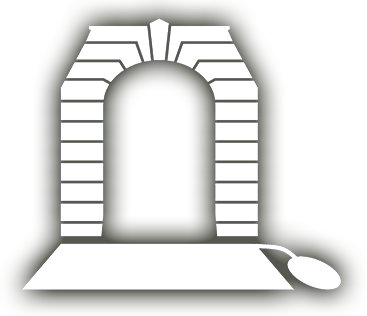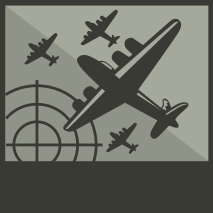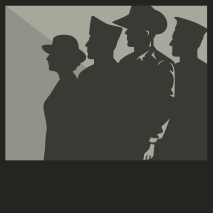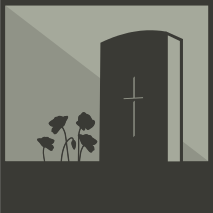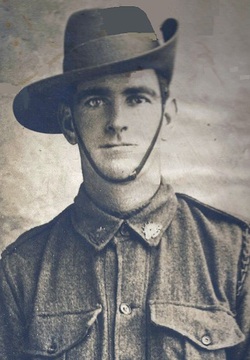
O'FARRELL, Patrick
| Service Number: | 967 |
|---|---|
| Enlisted: | 27 January 1916, Tallangatta, Victoria |
| Last Rank: | Private |
| Last Unit: | 37th Infantry Battalion |
| Born: | Noorongong, Victoria, Australia, 22 May 1886 |
| Home Town: | Tallangatta, Towong, Victoria |
| Schooling: | Noorongong State School, Victoria, Australia |
| Occupation: | Farmer |
| Died: | Killed in Action, France, 24 February 1917, aged 30 years |
| Cemetery: |
Cite Bonjean Military Cemetery, Armentieres IV F 39 |
| Memorials: | Australian War Memorial Roll of Honour |
World War 1 Service
| 27 Jan 1916: | Enlisted AIF WW1, Private, 967, Tallangatta, Victoria | |
|---|---|---|
| 3 Jun 1916: | Involvement AIF WW1, Private, 967, 37th Infantry Battalion, Enlistment/Embarkation WW1, --- :embarkation_roll: roll_number: '17' embarkation_place: Melbourne embarkation_ship: HMAT Persic embarkation_ship_number: A34 public_note: '' | |
| 3 Jun 1916: | Embarked AIF WW1, Private, 967, 37th Infantry Battalion, HMAT Persic, Melbourne | |
| 24 Feb 1917: | Involvement AIF WW1, Private, 967, 37th Infantry Battalion, The Outpost Villages - German Withdrawal to Hindenburg Line |
Help us honour Patrick O'Farrell's service by contributing information, stories, and images so that they can be preserved for future generations.
Add my storyBiography contributed by Stephen Learmonth
Paddy was born on the 1886 at Tallangatta, Victoria. He was one of six children of James and Margaret (née Shanahan) O’Farrell. His family owned 340 acres and were active participants in the running of the Noorongong State School.
On the 27th of January, 1916, Paddy underwent his medical examination in Tallangatta. Despite the missing the third finger on his left hand, he was passed as medically fit. Paddy was a single, 29 year-old farmer upon enlisting. He was allocated the Regimental Number 967 and placed in C Company of the 37th Infantry Battalion. He took his oath of service at Tallanagatta on the 22nd of February.
Paddy completed his initial training at Seymour. On the 25th of March he was given a 58 hour leave pass. He was 24 hours late arriving back and was charged with having been absent without leave. He was let off with a warning. In early June of 1916 the battalion embarked on HMAT A34 Persic at Melbourne.
At dawn on the 28th of June the Persic steamed slowly into Table Bay at Cape Town. Although initially not allowed ashore for free leave due to a number of meningitis on board, the Cape Town officials conceded and allowed them to conduct regulated parades and route marches. The Persic weighed anchor on the 30th and proceeded to its next port of call at St Vincent at the Cape Verde island group. On the 16th of July the troops aboard heard the long, continuous blast of the ship’s siren, the signal denoting a submarine attack. The troops responded quickly and moved to their appointed boats, quietly awaiting the explosion of a torpedo. Fortunately it turned out to be a rigorous drill. The Perisc arrived at Plymouth, England on the 25th of July.
The battalion entrained at Devenport and arrived at their new home at No. 5 Camp, Larkhill on Salisbury Plain. Two months later Paddy was admitted to the Fargo Military Hospital at at Larkhill with influenza. Two weeks later he marched in to No. 1 Command Depot at Perham Downs (often referred to as “Perishing Downs” by troops stationed there). On the 22nd of November the battalion were transported across the English Channel to France. Within a week they had begun to occupy the trenches on the Western Front near Armentieres. The winter of 1916-17 was one of the coldest in history with an average daytime temperature of around 2oC.
Paddy was admitted to the 7th General Hospital at St Omer in early Decemeber having developed a case of the mumps. He would rejoin his battalion in the field on Christmas Eve.
In February of 1917 the battalion was in the front line near La Chapelle d’Armentieres (see image below). At 0550 hours on the 23rd, the Germans layed down a barrage on the Australian trenches, using their heavy minenwerfer or trench mortars. Battalion records state that, although there were six casualties as a result of the barrage, there were no deaths. Paddy is listed as having been killed in action on the 24th of January, although the War Diarist wrote that there were no casualties on the day. It must be assumed that Paddy was one of the ORs (other ranks) wounded on the 23rd and then succumbed to his wounds the following day.
Paddy was buried in the Cite Bonjean Military Cemetery at Armentieres, France. He is also remembered at the Australian War Memorial Roll of Honour, the Fernvale Hall Honour Roll, the Noorongong Honour Roll, the Noorongong School site and the Towong Shire Boer War and WW1 Roll of Honour at Tallangatta, Victoria. For his service he was awarded the British War medal and the Victory Medal.
Biography contributed by Carmel Tobin
Contributed by Carmel Tobin (with thanks to Stephen Learmonth)
PATRICK JAMES (PADDY) O’FARRELL
Paddy O’Farrell was born at Noorongong in the District of Mitta Mitta on May 22, 1886. He was one of six children of James and Margaret O’Farrell of Fernvale and the elder brother of Nance Tobin (née O’Farrell) of Golden Glen, Eskdale. Described as “a fine fellow and a general favourite with all” (Obit, Tribune).
On January 27, 1916, Paddy underwent his medical examination in Tallangatta. Despite missing the third finger on his left hand, he was passed as medically fit. At the time, he was a 29-year-old single farmer who had completed a three-year apprenticeship as a blacksmith. He was assigned Regimental Number 967 and placed in C Company of the 37th Battalion. He took his oath of service at Tallangatta on February 22, 1916.
The 37th Battalion was based in Seymour, with recruits drawn from Melbourne, northeast Victoria, and Gippsland. After basic training at Seymour, the battalion embarked on the HMAT A34 Persic on June 3, 1916, and sailed via Cape Town and the Cape Verde Islands, arriving in Plymouth, England, on July 25, 1916.
The battalion was stationed at No. 5 Camp, Larkhill, on Salisbury Plain, where they underwent further training. On September 28, Paddy was admitted to Fargo Military Hospital with influenza. He rejoined his unit two weeks later.
On November 22, the battalion was transported across the English Channel to Armentières, France, a “quiet” area where newly arrived troops could gain their first experience of trench warfare. Within a week, the 37th Battalion began occupying trenches on the Western Front, conducting patrols into No Man’s Land and minor raids on German trenches. The winter of 1916-17 was one of the coldest in history, with an average daytime temperature around 2°C. The cold, snow, and prolonged exposure in muddy trenches caused widespread suffering, with trench foot, frostbite, and respiratory diseases being common.
One of the most troublesome complaints was mumps, which affected Paddy on December 3, 1916. He was admitted to the 7th General Hospital in St. Omer but rejoined his battalion in the field three weeks later, on Christmas Eve.
Paddy served as a scout, a role that involved venturing into No Man’s Land to cut wire entanglements that protected enemy trenches and gathering intelligence on German gun placements and snipers. The task was described as “exciting and hazardous” and required “judgment, skill, and initiative” (McNicol). In mid-February 1917, 400 troops from the 37th Battalion and 400 from the 38th Battalion began training for a special raid set for February 27, 1917.
Three days before the raid, on February 24, 1917, Paddy was killed in action. Whilst McNicol doesn’t reference Paddy’s death in his detailed "History of the 37th Battalion", letters and obituaries indicate he was more likely killed while performing his duties as a scout than in the heavy barrage levelled at the Australian trenches by the Germans on 23 February.
A letter from Private George Farthing of Noorongong to his father, James Farthing, describes Patrick’s fate: “poor old Paddy Farrell was killed on the 24th whilst out cutting the wire.” The chaplain attached to the 10th Brigade wrote to Paddy’s mother, stating that “he was shot through the heart, and his death was instantaneous.” Sgt. Christian also wrote, offering “the sincere sympathy of myself and all the boys of his old platoon. He was a scout and was hit by a bullet. He suffered no pain and was brought in by his mates… Pat was one of the whitest fellows we have ever met, and a mighty good comrade anywhere.” Paddy’s obituary in the local paper read, “Paddy was a well-known identity in Tallangatta district … He was a smart, athletic young fellow, and one who, as a soldier, would certainly give a good account of himself.” Paddy was 30 years old.
The special raid occurred on February 27, 1917. It was meticulously planned and executed, and “as such things go, a great success” (McNicol). Forty-nine Australians were killed, and 167 were wounded. After participating in further battles at Messines and Passchendaele, the 37th Battalion moved to the Somme in March 1918. Due to heavy casualties and a lack of recruits, it was disbanded in October 1918 to reinforce other battalions.
Paddy is buried in the Cite Bonjean Military Cemetery, Armentieres, France (Plot IV.F.39). He is commemorated at the Australian War Memorial Roll of Honour, the Fernvale Hall Honour Roll, the Noorongong Honour Roll, the Noorongong School site, and the Towong Shire Boer War and WW1 Roll of Honour at Tallangatta, Victoria.
For his service, he was awarded the British War Medal and the Victory Medal.
Sources:
· https://vwma.org.au/explore/people/180076
· NAA – Attestation Paper and Service Record
· The Tribune, Thursday, June 21, 1917, page 7
· The Upper Murray and Mitta Herald, March 22, 1917, page 2
· The Thirty Seventh: History of the 37th Battalion of the A.I.F. by N. G. McNicol, Melbourne: Modern Printing, 1936
· Letter from Private George Farthing to his father, James Farthing, Noorongong – courtesy of David Tobin

